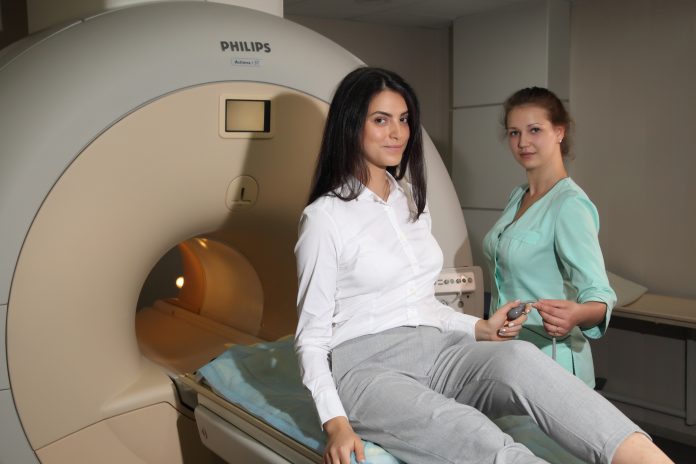Dr Miranda Fidler from the International Agency for Research on Cancer highlights the burden of cancer and the need for prevention, diagnosis, and care
Cancer is a major cause of morbidity and mortality across all age groups in both developed and transitioning countries. Although substantial research on cancer in children and older age groups has been undertaken, the burden of cancer among young adults (20-39 years) has rarely been studied in-depth, often being overlooked by cancer researchers and policymakers alike. With an increasing need of international research investigating the specific issues unique to this age group of cancer patients to improve cancer-related outcomes, a recent report sought to assess the scale and profile of young adult cancers globally. (1)
Analysis
Although it is broadly accepted that the age range for childhood and adolescent cancer is 0-14 and 15-19 years, respectively, the age range for young adult oncology is less clear as there is no uniform opinion on the upper age limit for this group. In the study by Fidler et al, young adult cancers were defined as those that occur between the ages of 20 and 39 years, which is in line with that suggested by the Adolescent and Young Adult Oncology Progress Review Group.
Using the International Agency for Research on Cancer (IARC)’s GLOBOCAN database, the study authors estimated the number of new cancer cases and cancer-related deaths for all cancers combined (excluding non-melanoma skin cancer), as well as by 27 specific cancer sites. Variations in the cancer burden among young adults were assessed at the country and regional level, as well as by the Human Development Index (HDI), which uses life expectancy, education and gross national income to give an indication of socio-economic development.
Global burden and cancer profile
In total, an estimated 975,000 new cancer cases and 358,000 cancer-related deaths occurred among young adults globally in 2012. Of these, 65% of all new cancer cases and 54% of cancer-related deaths occurred in women.
The cancer profile among young adults was observed to bridge between paediatric and adult oncology. Common tumour types in children and adolescents, including leukaemia and cancers of the brain/nervous system, were among the higher-ranking cancers at ages 20-39. However, common epithelial tumours such as breast, cervical, and colorectal cancer were more frequently observed among young adults than children or adolescents, though still to a lesser extent than that observed in older ages.
Breast or cervical cancer was the most common cancer type in young adults for most countries in terms of incidence and mortality and together accounted for about 302,000 (31%) of the total estimated new cases and about 77,000 (21%) of the total estimated cancer-related deaths. Other frequently diagnosed cancers included thyroid cancer, leukaemia, and colorectal cancer. In terms of deaths, leukaemia, liver cancer, and brain/nervous system tumours were large contributors to the burden in addition to breast and cervical cancer.
Global variations
Variations in the cancer burden among young adults were evident when the data were stratified by the HDI. Breast and cervical cancer were ranked the first and second most common cancers, respectively, in the low, medium, and high HDI levels, whilst at the very high HDI level these cancers ranked first and fifth, respectively. In general, cancers associated with infection, such as liver cancer and Kaposi sarcoma, were more frequent in countries indexed within the low HDI level, whilst thyroid cancer, skin melanoma, and testicular cancer were highly frequent in very high HDI regions.
Such differences in the distribution of cancer types, with more fatal cancers generally more prominent in low HDI settings, was in turn partially responsible for the poorer cancer outcomes noted among young adults from these regions. Fractured health infrastructures, the detection of cancers at a later stage and poor access and availability of treatment also likely relate to the worse outcomes in less developed regions.
Moving forward
With nearly one million cancers occurring among young adults worldwide in 2012, efforts are urgently needed to address the cancer burden in this age group. Particular opportunities for improvement relate to:
- Cancer prevention;
- Early detection and timely diagnosis;
- Access to appropriate and affordable treatment and;
- Expanding the young adult cancer agenda beyond high-income countries.
For example, given the particularly heavy burden of breast and cervical cancers, increasing awareness of cancer in young women at both the public and professional levels as well as timely treatment is of key importance. National human papillomavirus (HPV) vaccination programs, early detection, and, in women older than 30 years, screening, could significantly reduce the global burden of cervical cancer in young women, at a limited cost.
In closing, although cancer is less frequent in young adults than at older ages, its impact remains considerable because these individuals have a large proportion of their expected lifespans remaining, contribute substantially to the economy, and play an important role in caring for their families.
As young adult cancer patients exhibit a combination of features observed in younger and older patients, it is crucial that progress is achieved through a combination of the methods that led to improvements in these other groups: the advancement of risk stratification and treatment protocols through clinical trials in children and implementation of effective prevention and early detection at older ages.
1 Fidler MM, Gupta S, Soerjomataram I, et al. Cancer incidence and mortality among young adults aged 20-39 years worldwide in 2012: a population-based study. Lancet Oncol Published Online First: 28 November 2017. doi:10.1016/S1470-2045(17)30677-0
Dr Miranda Fidler
Postdoctoral fellow at IARC
International Agency for Research on Cancer
World Health Organization
Tel: +33 (0)4 72 73 84 85
Twitter: @IARCWHO











